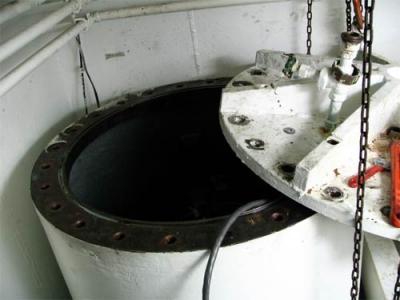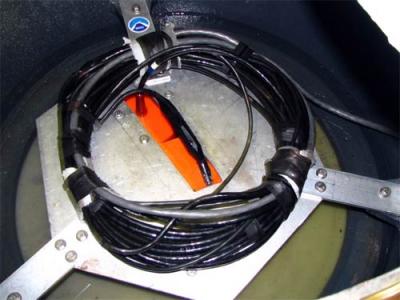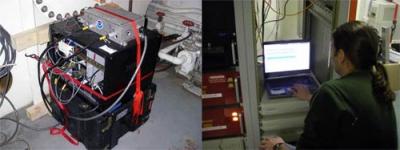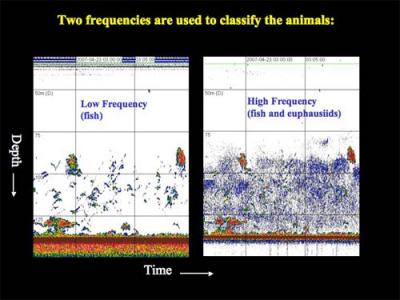When it gets really quiet on the ship a small ping or chirp can be heard. I was on a mission to figure out where that sound was coming from. I could think of no better person from the science party than Alex De Robertis. Alex is a Research Fishery Biologist working for the Alaska Fisheries Science Center that is a division of NOAA. He is onboard the Healy working with acoustics to measure the abundance of fish and krill in the northern Bering Sea. So Alex would be my sound expert and I wanted to find out if his experiment was the sound I heard.
Alex is a one-man sound machine. Okay, not really, but he is working by himself using sound to find the fish and krill in the sea during the BEST expedition. He came onboard the Healy in Seattle and worked to get all his gear in order. He had to deal with a lot of cables, electronics, and not to mention getting to the very bottom of the ship. The Healy has a very unique setup in that they have already installed an "Arctic well”. This is a hole that goes down in the ship and has a window that is transparent to sound. The well is filled with antifreeze to keep any instrument from freezing. In normal situations, the transducer would be installed permanently to a ship through a hole that is sealed with the transducer hanging from the ship. That type of set-up works on small boats and in weather conditions where there is no ice.


(Photo courtesy of Alex De Robertis)
The Healy is equipped with a lot of equipment that uses sound for imaging. The pinging that I heard was not actually Alex’s but the ship’s one for mapping the seafloor. The sound transmitted by the transducer is at a frequency that humans can’t hear. Due to the many sound instruments and the possible interference among the cables, Alex actually uses a transducer to change the sound into light and the information is sent to his computer through fiber optic cords. This allows Alex to view the imagery with as few disruptions as possible.

Alex reviewing the current imagery as the ship moves.
Alex explained to me that his equipment is basically a precision calibrated fish finder. The backscatter from the received sound is then put into an echogram showing depth over time. The different species can be detected by different frequencies. The low frequency (38KHz) typically shows fish and the high frequency (120KHz) will show large plankton such as krill.

away from the equipment down at the bottom of the ship.

His findings are important in discovering the relationship of fish and krill to the ice. He has found so far on our cruise that the fish and plankton are more abundant along the edge of the ice where temperatures are slightly higher. Alex has also noted the vertical migration of the krill to go from lower depths to near the surface at night to find food. By knowing where the fish are, Alex can begin to make predictions about their abundance and total populations. When not in the ice, the echograms are used to locate fish and trawls are done to actually identify the species and determine age and numbers. This information is then used by the Fisheries Management Council in their decisions on what the fish quota will be for the year.



Comments